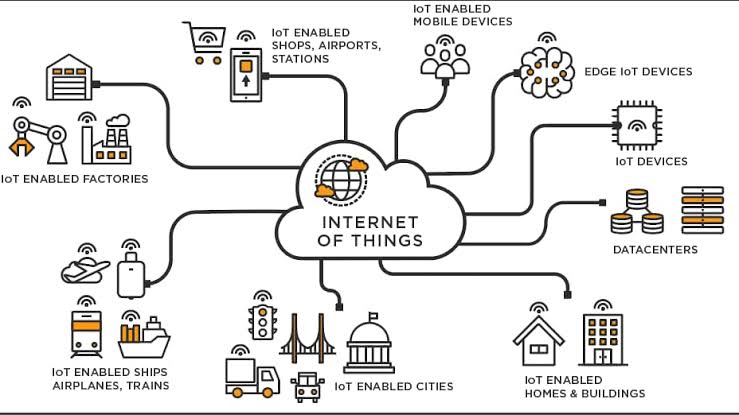Deepfakes |
Why in News: The Union Information Technology Minister recently announced the government’s intention to establish regulations aimed at managing the dissemination of deepfakes on social media platforms, labeling them as a “novel threat to democracy.”

About Deepfakes:
Deepfakes are fabricated multimedia content generated using machine-learning algorithms, aiming to disseminate misinformation by substituting the appearance, voice, or both of a real individual with synthetic counterparts.
- Etymology: The term “deepfake” merges the concepts of deep learning and falsity.
- Capabilities:Deepfakes can fabricate non-existent individuals and simulate real individuals engaging in actions or utterances they haven’t actually performed.
- Working:
- Creation Process:Deepfakes are crafted using machine learning models employing neural networks to manipulate visual and auditory elements.
- Training: Creators train neural networks on extensive real video footage of the target individual to imbue the system with a comprehensive understanding of their appearance under varied conditions.
- Implementation: Trained networks are integrated with computer graphics techniques to overlay the individual’s likeness onto another actor, thus creating a deepfake.
Web 5.0 |
Why in News: The former CEO of Twitter, Jack Dorsey, has unveiled his vision for a novel decentralized web platform dubbed as Web 5.0.

About Web 5.0
- Development: Spearheaded by Dorsey’s Bitcoin business unit, The Block Head (TBH), Web 5.0 is undergoing development with the objective of creating an extensively decentralized web, granting users autonomy over their data and identity.
- Hybrid Model: Web 5.0 combines the principles of Web 2.0 and Web 3.0, offering users the ability to “own their identity” and exercise control over their data.
- Empowerment: Both Web 3.0 and Web 5.0 advocate for an internet landscape free from censorship imposed by governments or large tech corporations, as well as minimizing the risk of significant network disruptions.
Web Version | Description | Characteristics | Examples |
Web 1.0 | The “read-only Web” | Static pages, content delivery, directories, banning of advertisements | Ofoto, personal web pages |
Web 2.0 | The “participative social Web” | Reading, writing, creating, interacting with end user, participatory culture, user-generated content | TikTok, social media websites |
Web 3.0 | The “semantic Web” | Decentralized, open, integration, automation, discovery, data, globalization, intelligent semantic web | Blockchain technology, AI, data integration |
Web 4.0 | The “mobile Web” | Wireless communication, mobile devices, real-time connection, global positioning system (GPS) | GPS navigation, mobile devices |
Blockchain Technology |
Why in News: The Chairman of Reliance Industries expressed strong support for blockchain technology, emphasizing its pivotal role in fostering a trustworthy and fair society.

About Blockchain Technology
- Decentralized Ledger System:Blockchain technology operates as a decentralized digital ledger system, enabling secure and transparent recording and storage of information without intermediary involvement, such as banks or financial institutions.
- Security Features:Utilizing cryptographic algorithms, blockchain creates a secure and tamper-proof ledger of transactions, which undergo verification and recording by a network of participants.
- Participant Involvement:Each participant within the network maintains a copy of the ledger. Any modifications to the ledger necessitate approval through consensus among network participants, ensuring the ledger’s integrity.
- Diverse Utility:While commonly associated with cryptocurrencies like Bitcoin, blockchains offer a range of potential applications extending beyond currency. These include supply chain management, voting systems, and digital identity verification.
Augmented Reality (AR) |
Why in News: Researchers at MIT have developed an augmented reality headset named X-AR, which enables users to visualize concealed objects within a box or beneath a pile.

About Augmented Reality (AR)
Augmented Reality (AR) is an advanced rendition of the tangible, real-world environment, achieved through digital visual elements, sound, or other sensory inputs, facilitated by technology.
- Integration with Reality:AR overlays digital content onto real-life surroundings and physical objects, enhancing the user’s perception of their environment.
- Operational Mechanism: AR functions by layering digital information onto real-world objects, facilitating a three-dimensional experience that enables users to engage with both the physical and digital realms.
- Key Features: AR encompasses three primary features: the fusion of digital and physical worlds, real-time interactive capabilities, and precise 3D recognition of both virtual and tangible objects.
- Contrast with Virtual Reality (VR):Unlike Virtual Reality (VR), which constructs its own simulated environment, AR enriches the existing real-world environment by integrating additional digital elements.
Virtual Reality (VR): Virtual Reality (VR) is a computer-generated simulation of a three-dimensional environment, allowing users to immerse themselves in and interact with a virtual setting that closely mimics reality as perceived through their senses. l Creation and Access: VR environments are crafted using computer hardware and software, presenting users with lifelike digital realms. To engage with these environments, users utilize specialized equipment such as headsets or goggles, known as Virtual Reality headsets or helmets. |
Internet of Things (IoT) |
Why in News: ClearBlade Releases Latest Version of IoT Platform

About Internet of Things (IoT)
IoT comprises devices, vehicles, and home appliances equipped with electronics, software, actuators, and connectivity.
- Enables connection, interaction, and data exchange among these entities.
- Expansion of Internet Connectivity:
- Extends internet connectivity beyond standard devices (e.g., desktops, laptops, smartphones) to everyday objects.
- Objects range from cell phones to household appliances to industrial machinery components.
- Examples of IoT Devices:
- Cell phones, coffee makers, washing machines, headphones, lamps, wearable devices.
- Components of complex machinery like jet engines in airplanes or drills on oil rigs.
- Embedded Technology:
- Devices embedded with technology can communicate and interact via the internet.
- Remote monitoring and control capabilities enhance functionality.
- Communication and Interaction:
- Facilitates communication between devices, applications, and users.
- Devices “talk” to each other, enhancing automation and efficiency.
- Internet Connectivity Not Mandatory:
- IoT can function as a network of interconnected devices without internet access.
- Inter-device communication remains central to its functionality.



